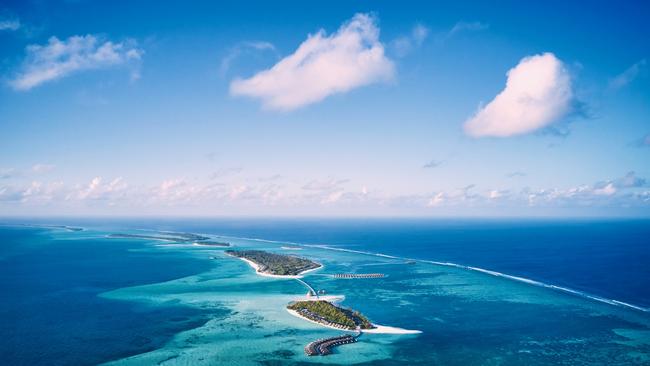Scientists take on riddle of shrinking and growing islands
A 2010 study found that although the country’s near-1200 islands are shrinking in places, they are growing in many others.

Scientists are investigating why the Maldives are expanding in some areas and shrinking in others.
Rising sea levels have raised fears of the holiday islands losing land. However, a more complicated picture is emerging. A 2010 study found that although the country’s near-1200 islands are shrinking in places, they are growing in many others.
Now British scientists are undertaking a £2.8m ($5.3m) effort, called Arise, to better understand how sand and sediment builds up on coral reef atolls, the natural platforms that support the nation’s islands.
Paul Kench, professor of tropical coastal change at the National University of Singapore, told The Times: “All the evidence to date is that the islands are changing and dynamic. There are very few examples of islands disappearing. Much of the evidence, not just in the Maldives but in the Pacific, is that islands are changing, are mobile.”
Researchers have been in the archipelago this year, measuring on land and below the azure waters of the Maldives. Some are looking at the types of sediment washing ashore and others the topography of the land. Much of the effort entails measuring waves and currents.
Tim Scott, associate professor in ocean exploration at the University of Plymouth, is examining the sub-surface of the reef using seismic waves.
He said: “There’s loose mobile sediment that comes from different sources around the atoll system, and waves during storms wash sand on to the platform that create these idyllic low-lying islands. They generally never build any higher than the waves can reach.”
The aim is to build a “digital twin” of the island. That should enable scientists to create computer models on all the data harvested, to predict how the islands respond to future situations.
“It’s an update on the bathtub assumption that as sea level rises, everything floods. It’s a mobile island,” Dr Scott said. “It’s not suggesting sea-level rise is not going on. It’s trying to better understand how these islands will respond to sea-level rise.”
The 2010 study looked at 30 of the islands and found most were stable or increasing in area, with only 14 per cent experiencing a net reduction. Later research on a larger scale has suggested more like 20 per cent were losing area.
However, increases in area are not just due to natural processes – local authorities have also been engineering expansions.
They have built an entire artificial island, Hulhumale, by piling up sand pumped from the seabed. The “City of Hope”, at about 2m above sea level, is higher than most of the natural islands. Those include the densely populated city of Male, which is primarily built on one central island.
Depending on the results that come out of Arise, the advice might be to work with nature rather than against it.
For example, engineering approaches such as putting sea walls around an island could backfire by stopping the “overwash” process by which waves naturally form land on the atolls.
“There could be nature-based solutions such as looking at coastal protection measures, where the reef flat is nourished with dredged sand to supplement natural processes that wash it on to the island,” Dr Scott said.
The question is whether people can adapt fast enough to deal with farmland flooded by saltwater and the need to move infrastructure.
“There’s a lot of threats that sea-level rise is going to place on these communities,” Professor Kench said.
THE TIMES



To join the conversation, please log in. Don't have an account? Register
Join the conversation, you are commenting as Logout